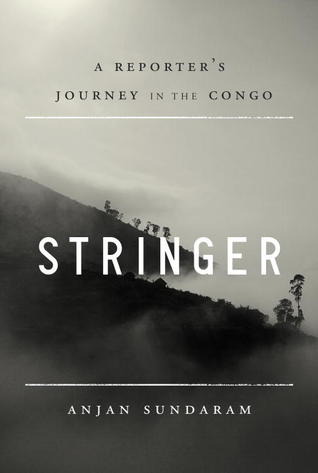R2P in Theory and Politics (3)
 The third and final part of my review of Gareth Evans’ The Responsibility to Protect.
The third and final part of my review of Gareth Evans’ The Responsibility to Protect.
Risk of Perverse Incentives
My qualms about R2P are driven not just by the lesson of Somalia and my discomfort with the conventional script about Rwanda, but also the experience of Darfur. The threat of military intervention in Darfur hung over the efforts to mediate a peace agreement between government and armed movements in Abuja. I continue to believe that the Abuja process was the best opportunity for peace. It failed for numerous reasons, among which the obstinacy of the Sudan government delegation ranks high. But one secondary reason was that armed intervention kept raising its voice. The roars of the tiger were louder than the braying of the donkeys.
The general point here is that once the possibility of an armed intervention has been canvassed, it dominates the political stage. This can generate perverse incentives to block peace and escalate or prolong human suffering, in the hope that this will provoke a more favorable outcome””an intervention. There are good reasons to believe that this contributed to the prolongation of the crisis in Darfur. The fear of intervention certainly pressured the Sudan government to sign a deal that it considered unfavorable. But the hope of intervention encouraged the rebels to hold out for more.
I want to avoid finger-pointing about who was responsible for what errors. There is quite enough miscalculation to go around. For the most part, the mistakes that were made were made in good faith. But this should not mean that we do not analyze them and track their consequences.
In August 2004 Evans wrote a piece that is, to my reading, unmistakably interventionist. I will quote it at length because it illustrates, for me, the political life of the concept of R2P more vividly than the later book. Given that my concern is with Darfur, and Evans””writing near the height of the crisis””identifies Darfur as “a real test case” for R2P, this article has special salience.
“Two specific forms of military intervention may become necessary in Sudan. If government bombing of civilians in Darfur continues, the Security Council should authorise a no-fly zone over the region, on the useful precedent of the cover given to the Kurdish areas of Iraq in the 1990s. And if violence continues against those trapped in the IDP camps, and relief efforts to them continue to be obstructed, effectively protected secure areas must be created concentrations of the internally displaced, so that aid can be provided to them without hindrance….
“So Darfur is becoming a real test case for the “˜Responsibility to Protect’ principles outlined in the 2001 report of that name …. The crucial argument there was that while the primary responsibility to protect its own people properly lies with the sovereign state, if that responsibility is abdicated, through ill-will or incapacity, then it shifts to the international community collectively – who should respond with force if large scale killing or ethnic cleansing is involved, and that is the only way to halt or avert the tragedy.
“… And the concept of “˜responsibility to protect’ is gaining a real conceptual toehold, much harder for the sovereignty-at-all-costs brigade to resist than “˜the right to intervene’.”
(Ref: “˜Darfur and the Responsibility to Protect,’ The Diplomat, Aug-Sept 2004)
This article implies that the political center of gravity of R2P is indeed coercive intervention. The last sentence quoted might even give ammunition to those who argue that R2P is merely droit d’ingérence under a new name. Evans does not outright demand intervention, but he makes it clear that (at the time of writing) he considered that Darfur was very close to meeting the criteria.
The ICG report “To Save Darfur,” published on 17 March 2006, while the Abuja peace talks hung in the balance, devoted seven times as much space to the deployment of UN troops in comparison to the peace process. The group’s next report was focused upon getting the UN into Darfur. Only after the peace agreement had failed, and ICG emphasize just how important it was to have a credible peace process, and did it swing the balance back. We saw the same focus in the public rallies. The 30 April 2006 Washington rally was not a peace rally, and when Assistant Secretary of State Jendayi Frazer spoke and said the U.S. government was doing what it could””mentioning the peace talks””she was not applauded. Some booed her.
There is a difference between Evans’ 2004 position on Darfur and that in his book, published last year, where he writes (p. 61):
“But the argument is very strong””and accepted by most governments and relief organizations on the ground””that a nonconsensual military intervention (even assuming that the troops could be found anywhere to sustain it) would almost certainly be disastrously counterproductive, in terms of its impact on current humanitarian relief operations and the very fragile north-south peace process.
“Darfur still remains, on any view, an “˜R2P situation,’ and one, moreover, where the responsibility to react has shifted to the international community because of Khartoum’s manifest abdication of its own sovereign responsibility.”
Evans locates the “R2P failure” in Darfur not in the failure to use coercive force but in the failure of other measures short of such force. Later in the book, in his discussion of the criteria for intervention, under “balance of consequences,” Evans identifies Darfur as “the classic contemporary case” in which the balance of consequences is against coercive military measures. He writes (p. 145): “None of this means that the “˜responsibility to protect’ norm is irrelevant: just that it has to be implemented here by means falling short of full-scale coercive military constraint.”
I have no objection to Evans changing his position. Indeed, as the facts change, or more facts come to life, changing one’s position is the only honest and honorable thing to do. Personally I was also more favorably disposed towards coercive measures in the middle of 2004 and it was only in 2005 that I began to argue that a coercive intervention would do more harm than good. The point I want to make is that the language of R2P allowed Evans’ shift””or his scepticism about intervention””to go unnoticed by the Darfurians, who continued to believe as late as 2006 and even 2007 that the ICG was a staunch advocate of military intervention.
There is also a deeper point here, about the way in which international norms may encourage the extraversion of national politics. One of the aims of developing an international norm is for it to be domesticated into the national political life of countries which have yet to live up to the norm. This can certainly happen. But if a norm is significantly out of kilter with the conduct of domestic politics, then it can be instrumentalized for tactical political purposes which can then be an obstacle to achieving tangible progress.
To repeat: the political life of R2P“”as illustrated by the Darfur case””is more closely tied up with coercive intervention than Evans’ 2008 book implies. It changed the political dynamics in Darfur during the 2006 negotiations (hence my “R2P””rest in peace” quip). I should emphasize that this has absolutely no bearing on who was responsible for the atrocities committed during the 2003-04 period.
Double Standards on Asylum?
Another critique of R2P which I will consider only in passing is that it is largely silent on one of the most significant mechanisms for protection””granting asylum to refugees. Historically, the right to asylum in the face of persecution or war is has been the most important international norm providing protection. Revealingly, the only space devoted to refugees in The Responsibility to Protect is barely more than one page concerned with the return of refugees (pp. 168-9).
The global norm of refugee protection was adopted in the United Nations Refugee Convention of 1951 and the later 1969 OAU Convention on refugees, which broadens the legal definition of refugee. In the last forty years, while African countries have opened their borders to refugees, and have borne the greater part of the economic burden of hosting refugees, developed countries including the U.S., Europe and Australia, have become increasingly stringent in their refugee laws and policies. The guiding principle for refugee policy in many developed countries is refusal: an asylum-seeker is considered fraudulent unless she or he is able to prove otherwise, often in the face of opposing counsel with a very poor grasp of the facts and judges who are required to lean towards rejecting cases.
At the same time as norms on humanitarian assistance and R2P have been raised, norms on asylum have been lowered. Could the principle of R2P become a pretext whereby developed nations condemn poor and weak countries, legitimize their own (diplomatic, political, military) engagement in the affairs of these countries, and give themselves a pretext for maintaining their fortress-like immigration and asylum policies?
Charges of “double standards” are often made by those anxious to mask their own failings and human rights abuses. But this does not mean that the charges are without merit. Irrespective of their empirical basis, the “double standards” argument can take on a political life of its own. This is damaging to the advocates of R2P.
Conclusion
There is no satisfactory solution to the challenge of mass atrocities. I fear that the ambition of conclusively ending these atrocities through international action””norm development, diplomacy and peace support operations””is unrealizable. And I fear that laudable and defensible projects, such as R2P, run risks as well as bringing progress.
My preference is to take armed intervention out of the stable that includes other forms of engagement. In line with Harcourt, this would regard intervention as necessarily illegal but not necessarily unethical. International law and norms would remain silent on the issue.
This is not without its own hazards. It overcomes the problem of the difficulties of legislating on the basis of exceptional cases, and at a stroke eliminates the dangers inherent in formalizing the rules for intervention. It removes the “Trojan Horse” charge. It minimizes the risk of perverse incentives and the dangers of assuming that because an intervention can be morally justified, it will be practically possible. Recall Harcourt: justification lies in success.
But confining intervention to exceptional status holds a danger that it can be abused, and of legitimizing any presupposition against it and in favor of inviolable sovereignty””a return to the bad old days. It may encourage a push-back against the useful intermediate forms of small-scale coercive peacekeeping.
My preference is for norm development to be driven by domestic political processes in the countries concerned. Where that isn’t possible, there needs to be a close articulation between domestic and international norms, to avoid the kinds of distortion or paralysis of political processes that we have seen in Darfur.
There has been some significant push-back against R2P, including by countries that signed on to the World Summit declaration in 2005. In parts of Africa and Asia there is also a resurgence in support for old-fashioned concepts of sovereignty, partly as a reaction against the ICC. The moral bar has not been raised as high as the proponents of R2P demand””but it has been raised. Perhaps more significant will be the ways in which the norm changes the political dynamics of conflict, conflict resolution and peacekeeping. There are both good examples of this””effective diplomatic interventions in Kenya and Cí´te d’Ivoire””and more problematic cases such as the Darfur peace talks (and sceptics can argue that the successes are merely exemplars of old-fashioned diplomacy). UNAMID may yet turn out to be an example of effective civilian protection.
In conclusion: the core of my disagreement with Gareth Evans is that the reach of R2P exceeds its grasp. With the world constituted as it is today, R2P risks defining a norm and raising an expectation, without the commensurate capacity for response. This has serious dangers””normative success matched with practical disappointment. If Evans’ book were subtitled, “A new increment to international norms that can be used to improve diplomacy and peacekeeping” then it might be truer to the task in hand. But perhaps it might have made little impression on the global public.







Exceptionally thoughtful ,as usual,Alex. May I comment on the” Double Standards “point? I personally have raised it several times,in writing and during Radio or Television discussions; but I also accepted that all sides in Darfur have committed atrocities.The trials which were held prove that the government does not claim that only the rebels are to blame.
A relevant factor is the assumption that we do not know ALL the facts behind the calls for the R2P. Wikileaks has revealed part of what goes on in the dark.
The ICC prosecutor attempted to influence US actions.The paradox is that the US is not a signatory of the Rome Statute (or more precisely they have unsigned under G. Bush).His contacts prove beyond any doubt that the ICC operates in a Politicised world ;as its president told the UN.The prosecuror’s repeated claim that he was only interested in the judicial process have been exposed as untrue.
Moreover,he denied in an interview with Julian Marshall(18 December BBC World Service Radio) what he had stated according to the Wikileaks document that Lloyds bank holds President Bashir’s “stashed” billions. Lloyds has flatly refuted that claim .
To make a judgement;based on what we see above the surface ONLY is risky,to say the least.